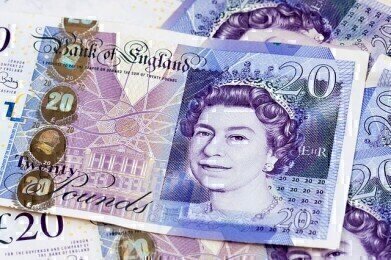Electrophoretic separations
On the Money. Chromatography Investigates
Aug 24 2015
People have to undergo drug testing as part of the application process and during employment in many occupations — unfortunately it is part of modern life. For the majority of people this is fine and passes without a hiccup, but sometimes things can go wrong. For one unfortunate bus driver it caused the end of his career as he has unfairly lost his job — and banknotes were the problem.
Dirty money
Many people handle cocaine everyday without their knowledge — it has been estimated that over 80% of UK banknotes carry detectable traces of cocaine. Banknotes become contaminated with many substances in general use, and are likely to pick up traces of cocaine after being handled around cocaine or through their use in snorting cocaine. This is one of the reasons why the use of contaminated banknotes to prove a drug offence is so difficult.
It is not obvious that the £5 note in your wallet is a mule for transporting Class A drugs — how does it manage it? Banknotes are made from paper and cotton fibres, and over a period of time the fibres can open up allowing drug particles to find gaps. The fibres of the banknotes are not necessarily chemically inert, drug particles can chemically bind to the fibre. The surface of a banknote will absorb oils and sweat from people giving a surface that can retain debris and contamination — including cocaine and other drugs. With all the other substances likely to be found on banknotes — how do we test for drugs?
Drug testing the cash
One of the requirements for drug testing banknotes is that the test is non-destructive (otherwise the analysis costs quickly increase). One method is to extract the cocaine from the banknotes using a suitable solvent: for example, shaking a banknote with de-ionised water and then extraction of the drug from the aqueous phase using ethyl acetate, or alternatively a polar solvent like acetonitrile could be used — it depends on which technique is used to analyse the resultant extract.
There are several techniques that can be used to quantify the amount of cocaine extracted from a banknote — GC-MS and LC-MS/MS have all been used for banknote analysis. A relatively recent introduction to forensic chemistry’s arsenal is capillary electrophoresis (CE), a technique that offers potentially quicker results than GC or LC and with lower costs. For more details about using CE have a look at the article, Capillary Electrophoresis: an Attractive Technique for Chiral Separations from Chromatography Today.
Plastic money
In late 2016, the Bank of England will issue a new £5 note — the UKs first polymer banknote. The new notes will last longer than the current paper notes and also will be cleaner than paper notes.
Hopefully this will reduce the risk of people getting cocaine contamination from the notes in their wallets.
Image by Kaz on Pixabay.
Events
Apr 22 2025 Kintex, South Korea
Analytica Anacon India & IndiaLabExpo
Apr 23 2025 Mumbai, India
Apr 27 2025 Portland, OR, USA
May 11 2025 Vienna, Austria
May 18 2025 Tempe. AZ, USA












